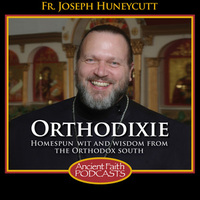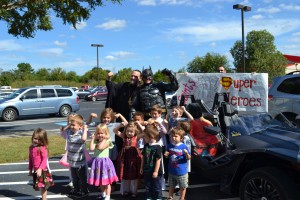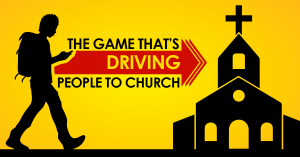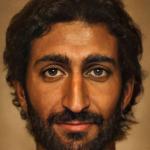 Reflections on the last 40 Years
Reflections on the last 40 Years
– Protopresbyter Thomas Hopko
Orthodox Monastery of the Transfiguration
Ellwood City, Pennsylvania
September 27, 2008
Membership in the Orthodox churches in North America in the past forty years has radically decreased. There are probably about half as many people in the churches today as there were four decades ago. It also seems that most adults who attend services in Orthodox churches today are “holding the form” of Orthodox Christianity while “denying the power of it” (2 Tim 3.5) as they ‘pursue happiness” according to “the American dream” as devotees of “the American way of life.”
Concerning the churches’ clergy during the past forty years, I believe that the task of finding, educating, appointing and supporting suitable candidates for the clergy, especially the episcopate, remains the greatest challenge in all Orthodox churches in North America today just as it was four decades ago when (as my friend, the late Fr. John Psinka would say), “few were called and all were chosen.”
Having stated the “negatives” — greatly reduced membership, inept leadership, nominal participation and widespread use of the church for secular purposes – the spiritual achievements in North American Orthodoxy during the past forty years are amazingly many and spectacularly significant. They were accomplished by a relatively small number of people, mostly converts to the Faith, people born abroad and clergy children. They are so remarkable that I am persuaded to call the past forty years a “spiritual springtime” for Orthodoxy in the United States and Canada.
I will comment on the accomplishments as I see them. They are not yet a bountiful “blossoming.” But they are a promising “planting” capable of producing, in due time, a rich harvest of spiritual fruits, including, we may hope, a company of committed and competent bishops, priests, deacons, monastics, church workers and lay leaders for the coming generations.
Eucharist Communion & Inter-Orthodox Cooperation
We are delighted first of all to note that although divisions among the Orthodox of North America in separate ecclesiastical “jurisdictions” still persist, no ethnic groups have warring church parties within themselves anymore, and none is at war with any other. With the exception of a few tiny “old calendarist” and “traditionalist” groups, Eucharistic Communion now exists among all of the Orthodox churches in North America. This is a marvelous blessing, for which we must be boundlessly grateful.
Though structural and administrative divisions continue to exist among the Orthodox in North America, cooperation and interaction for educational, spiritual, missionary and philanthropic purposes has never been greater and more effective among a relatively small number of fervently committed faithful in all the churches. There is still much to do in this regard. We have just begun. But what has already been achieved, thanks to the infusion of zealous converts into the Church, the fall of Communism in Eastern Europe, and the possibilities that now exist for communication and interaction among committed Orthodox Christians in all parts of the world, is truly amazing. The hopes that this engenders among us, with the challenges that it presents, are overwhelmingly positive.
Liturgical Reform & Renewal
The past forty years has witnessed an amazing liturgical renewal in all Orthodox churches in North America. This renewal has been so deep and extensive that I am moved to call it a “revolution,” and not merely a “renewal.”
Four decades ago, the practice in most Orthodox churches in America was to have a Sunday and Feast Day Divine Liturgy with choirs and cantors singing in old country languages, and to have baptisms, weddings and funerals performed as “private services” for the “customers” who ordered them from their priests who were often considered as parochial “employees.”
Lenten services were not those prescribed in the Lenten Triodion. The Liturgy of the Presanctified Gifts was virtually unknown. Holy Week for the great majority consisted of the Great Friday Matins with the Twelve Gospel readings on Thursday evening, one service on Great Friday itself, and the Paschal Procession and Matins, with the Sunday morning Divine Liturgy on Holy Pascha. A good number of faithful people attended these services. But few understood much of what was going on, except in an pietistic and emotional way.
Lay people received Holy Communion but once or twice, or at most four times, a year, either with Confession required before every act of Communion, or no Confession at all. This situation still exists in more places that it ought today, but virtually every Orthodox “jurisdiction” in North America now has a growing number of committed members demanding and experiencing a much fuller and deeper liturgical life, including regular participation, with proper preparation, in the Holy Mysteries. And almost all of the new mission churches, with plenty of the old established ones, are “liturgical wonders” compared to what existed in almost all churches forty years ago.
Preaching and teaching, especially Sunday and Festal sermons and parish educational programs, are generally better prepared and more effective than they were forty years ago. There are more educated preachers and teachers nowadays who work at their craft, virtually all of whom can function with some measure of competence in English. But, sad to say, it seems to me that the majority of preachers and teachers are still poorly prepared and do not work very hard, if at all, to improve their products. This is tragically sad since the resources to produce first rate sermons and classes are virtually boundless today compared to what was available four decades ago.
The past forty years has witnessed an explosion of liturgical resources and materials. Competent translations of virtually all liturgical services and offices are now readily accessible. (You just have to know how and where to “go on line” to get them.) Excellent liturgical books are available, with texts and rubrics. Music from all the various Orthodox traditions is also readily available, with many excellent renderings in English. Iconography has also come into its own. Excellently crafted reproductions and excellent originals done by truly talented artists now abound. Beautiful new church buildings are being constructed. Many societies and organizations now exist, such as PSALM and HEXAMERON, where those involved in liturgical matters meet, discuss, work together and also, of course, disagree and argue a bit, for their professional improvement and the spiritual benefit of the faithful people who profit from their labors. Time will tell how all this works itself out, and what lasting spiritual fruit it will bear. But the amount of people and the number of activities and projects in this critical liturgical area of church life is truly significant and gratifying.
Publications & Resources
When I entered the seminary fifty-one years ago one could count all the books about Orthodoxy in English on one’s fingers. Forty years ago there were a bit more educational resources. Today there are more publishers and publications, books, journals, educational materials and audio and video recordings in English than can possibly be counted, let alone carefully read and listened to. The quality and content of these publications, of course, varies greatly – as do that of the music and icons and architecture already noted, but products of highest quality are available to inform, instruct and inspire their users in the truth, goodness, beauty and power of God.
In recent years we also have radio and television programs in many parts of North America with serious and relevant content and quality. We think of Ancient Faith Radio and Come Receive the Light and Orthodoxy Now, and other such programs and projects.
Theological & Spiritual Education
Theological education in North American has never been better organized, presented and accomplished, with more and better qualified teachers and students, than it is today. And there has never been more effective cooperation among those engaged in this crucial work. Competition and mutual criticism still exist, as is to be expected. This is not surprising, and is even quite beneficial when done with love and respect.
The competence and cooperation among the greatly increasing number of Orthodox scholars in North American theological schools and institutes, and, more and more, in colleges and universities, has never been greater and richer. The Orthodox Theological Society in America, now more than thirty years old, is a splendid witness to this wonderful achievement, as are other gatherings of scholars in various areas and disciplines.
It may also be noted that among the most marvelous facts of the last seventy years of American Orthodox history (the one dearest to my heart) is that no major disagreement or animosity ever occurred during this whole time between the faculties of Holy Cross Greek Orthodox School of Theology in Brookline, MA and St. Vladimir’s Orthodox Theological Seminary, in Crestwood, NY, our first graduate theological schools in America. And today harmony and good will exists among all of our Orthodox theological seminaries in the US and Canada, without exception.
Virtually every Orthodox church in North America today has some sort of educational program to instruct people of all ages in the Orthodox Faith, and not simply to introduce them to a language and cultural heritage of an old world country. Plentiful and dependable materials and resources exist for these programs produced by the Orthodox Christian Education Commission and the various jurisdictional and diocesan educational departments, as well as our Orthodox theological schools and publishing houses. This work was just beginning forty years ago.
In addition to parochial and diocesan educational programs, a number of full-time Orthodox schools (such as our Three Hierarchs Eastern Orthodox School in Pittsburgh) have been established. This work, once again, is largely being done by small groups of extraordinarily courageous and gifted people in a fully cooperative “inter-Orthodox” way. Forty years ago no such schools existed.
Until just a few years ago there were virtually no supra-parochial or supra-diocesan activities for American Orthodox high school students that were not of a solely social, cultural or athletic character. Now there are such programs, almost all of an inter-Orthodox nature, whose purpose is to deal directly with the spiritual lives of teen-agers in order to assist them in seeing themselves, their studies, their vocations and their relationships in the light of Christ and the Gospel. Foremost among such activities is the CrossRoad program located at Hellenic College/Holy Cross in Brookline, MA in which qualified Orthodox students from all over the country, from all Orthodox “jurisdictions,” are brought together for strictly spiritual reasons (though they also have a very good social time while they’re at it) under the leadership of well trained and carefully selected teachers and counselors. Other programs on more modest (and less well-organized and well-funded) levels also exist for this purpose at our seminaries, and at places like Project Mexico. There are sure to be more of them as time goes by.
The greatly increased number of church camps and summer programs for children and young people, first among which is the oldest, largest and best organized camp at Antiochian Village in Ligonier, PA must also be noted. Leaders of these camps, most of which are operated in the highest professional manner, regularly meet to share their knowledge and experience. The fruits of these camping efforts are already visible in the relatively large number of church leaders that they have already produced.
Mentioning Antiochian Village, one must also mention the rather large number of retreat houses and conference centers that now exist in virtually all of the Orthodox “jurisdictions” in North America. Forty years ago there were almost none.
The wonderful work of the Orthodox Christian Fellowship (OCF) must also be noted at this point. The OCF exists to serve Orthodox students and young adults in all aspects of their spiritual lives. The Fellowship was extremely strong and influential on American campuses forty years ago under the leadership of Jim Couchell, later Bishop Dimitrios of Xanthas (now retired) who as a priest edited the Orthodox Observer newspaper and directed the Orthodox Christian Mission Center. The OCF movement all but disappeared in the 1980’s and 90’s when huge numbers of my generation’s college age children were lost to the Church. It has now reemerged, renewed and reorganized, to do marvelous work among the Orthodox young people of my grandchildren’s generation.
Mission & Evangelism
Mission and evangelism are now a normal part of Orthodox Church life in North America, at least rhetorically and theoretically. All committed church members speak about mission and evangelism, support it and do what they can to promote and enact it.
The Orthodox Christian Missionary Center (OCMC) now exists as a central and essential part of American Orthodoxy. It grew out of the missions department in the Greek Orthodox Archdiocese that originally resulted from the vision and labors of Fr. Alexander Veronis in Lancaster, PA. This effort then merged with efforts in other churches, particularly the Orthodox Church in America and the Antiochian Orthodox Christian Archdiocese, especially after the entrance of large numbers of missionary-minded Evangelical Christians into the Church. Indeed, the “becoming Orthodox” of the majority of members of the “Evangelical Orthodox Church” (EOC) led by its small band of courageous “bishops” is among the highest points in North American Orthodoxy in the past twenty years. Indeed, the entrance of the “Evangelicals” into Orthodoxy and the coming of monastic life to North America (which we will soon mention) may be the most important events of this time when one observes the impact that they have had on the Church as a whole. All honor and glory are due to those who made it happen.
The remarkable work of St. Herman’s Brotherhood in Platina, CA must also be mentioned at this point. In addition to its extraordinary achievements in translating and publishing marvelous books on Orthodox spirituality in English, the Brotherhood’s hard work resulted in many converts to the Orthodox Faith, including a company of zealous men and women from the Order of MANS whose impact on church life in all “jurisdictions” greatly exceeds its relatively small number.
Social & Charitable Work
In addition to the OCMC and the OCF that function under the Standing Conference of Orthodox Bishops in America (the consultative body known popularly as SCOBA that was formed more than forty years ago) the amazing work of International Orthodox Christian Charities (IOCC) must be noted. IOCC provides millions of dollars in various kinds of material aid to millions of needy and suffering peoples of all religions and cultures in all parts of the world. Forty years ago such an organization could hardly be imagined. God bless the faithful Orthodox Christians who founded and continue to sustain this work until today.
May God also bless the large number of charitable and philanthropic works that are sponsored and conducted in virtually all Orthodox dioceses and parishes today. Most of these good works are done quietly and modestly, again by relatively small groups of highly committed people; but they are being done. And there are also many more organized and extensive philanthropic and charitable activities as well. We are delighted to note just a few of the more prominent ones.
The largest shelter for homeless people in San Francisco, for example, is run by Orthodox Christians, several of whose leaders were once in the Order of MANS. Raphael House is located in two large apartment buildings in the heart of the city. It has impressive quarters and facilities, and carries on many projects. Over the years it has served tens of thousands of people in need of housing, guidance, inspiration and direction in countless ways.
St. John the Merciful House in Toronto, Canada that does similar work on a more modest level, with greatly fewer resources, must also be mentioned for its heroic labors on behalf of the poor and needy.
Project Mexico founded by Greg and Margaret Yova, with its offices in San Diego, has already built close to 200 houses for families without adequate places to live in Mexico. The Project also operates an orphanage for homeless boys on a beautiful ranch in Rosarito, with a beautiful chapel and full-time Spanish-speaking priest, Fr. Michael Nassir. The Project’s most powerful and far-reaching service for North American Orthodoxy as a whole is the opportunities that it provides for thousands of Orthodox Christians, mostly younger people, from all over the United States and Canada (and other countries as well) to engage in “hands on” work among the poor and needy. Those of all ages who have availed themselves of these opportunities testify with one voice that their lives have been radically changed by the experience.
Short term missionary and philanthropic work is also sponsored by the OCF and OCMC and other organizations providing opportunities for American and Canadian Orthodox people to engage personally in a great variety of missionary and philanthropic activities at home and abroad, in Latin America, Europe, Africa and Asia.
Special attention should also be given to the various ministries outside the church in which Orthodox people are engaged. Orthodox priests have served with distinction for decades in the military, several attaining to very high rank and standing. Priests and deacons, as well as qualified lay people, have served, and are still serving, as full-time and part-time chaplains, spiritual counselors and social workers in hospitals, schools and mental institutions.
Particular mention must be made of clergy and laity involved in the several prison ministries that now exist in the United States and Canada. An organization of Orthodox Prison Ministries composed of experienced leaders in this delicate work provides direction, resources and coordination for the efforts of the volunteers who dedicate themselves to this demanding ministry that includes regular visits to prisons, care for families with members in prison, and assistance to prisoners who have completed their time of incarceration.
Orthodox priests and lay people are also now found in directing and supporting roles in such Christian social agencies as Covenant House and Catholic Worker and Church World Service. Orthodox Christians are now also deeply involved in various “pro-life” and “anti-abortion” organizations and movements such as Orthodox Christians for Life. Diocesan and parish groups and local organizations that provide food for the hungry, shelter for the homeless and care for unborn and new-born babies and their parents, especially women who resist the evil of abortion, must also be noted.
Mention must also be made of organizations such as Orthodox Women in Healing Ministries and the Orthodox Christian Association of Medicine, Psychiatry and Religion that serve to facilitate continuing education, inspiration and inter-action among Orthodox people engaged in various kinds of healing services.
Attention must also be given to the international Orthodox Peace Fellowship led by Jim and Nancy Forest who were well-known forces in North American spiritual and moral life long before they joined the Orthodox Church with their children. The OPF has an office and a significant number of active members in the US and Canada who work for peace among human beings in a variety of ways through a variety of activities.
And surely the organization for inter-Orthodox unity and collaboration on all levels of church life and work, Orthodox People Together, led by Demetra Jacquet and Phil Tamoush, deserves our grateful remembrance for what it has accomplished in so many different ways in past decades.
Forty years ago virtually no philanthropic organizations existed in North America, not even in informal fashion in parishes for the churches’ “own people.” It is tragically true that many Orthodox in the United States and Canada remain ignorant, indifferent or plainly opposed to philanthropic and charitable activities, especially when they are done for the benefit of people who are not members of the Orthodox Church. But a wonderful beginning has been made which, by God’s grace, will produce an abundant blossoming in coming years not only for “our own people” but for all of God’s people, without qualification or discrimination.
We must remember at this point that though an unconditional commitment to Orthodox Christian doctrine and morals, with total responsibility for Orthodox Church teaching and practice, is obligatory for participation in Holy Communion in the Orthodox Church (and, indeed, in all of the Church’s sacramental mysteries), the Church’s charitable and philanthropic services must be available to everyone – whoever, whatever and however they are – without condition or qualification of any kind whatsoever. For when it comes to the “love for humanity” upon which our “good answer at the dread judgment seat of Christ” will depend, no human being can be excluded from our acts of love in Christ’s Name.
Presence in American Life
Orthodox clergy and laity have always been involved in formal and informal organizations and activities dedicated to overcoming misunderstandings and divisions among Christians and non-Christians, and to fostering cooperation among people where such is possible and desirable for the good of everyone, believers and unbelievers alike. Among the too many to name who served with great distinction and responsibility, and much pain and little praise, in this challenging and gravely misunderstood work is certainly Fr. Leonid Kishkovsky. This remarkably courageous and dedicated man labored in many different functions and positions in this thankless work, even holding, for a time, the presidency of the National Council of Churches of Christ in the USA.
Note must also be taken of the modest, yet not insignificant, presence of Orthodox people in public life outside church circles.
While a sprinkling of Orthodox believers were known in academic circles over the last half century — scholars like Archbishop Demetrios of the Greek Orthodox Archdiocese, and Fathers Florovsky, Schmemann, Meyendorff and Harakas, and Professors Arseniev, Fedotov and Geanokopoulos, and in the sciences, physicist Fr. John Turkevich (Metropolitan Leonty’s son) and geneticist Dr. Theodosius Dobzhansky — the impact of committed Orthodox Christians in American public life has been virtually non-existent. Except for Archbishop Iakovos of the Greek Orthodox Church (whose photo on the cover of LIFE magazine with Martin Luther King Jr. and other leaders of the civil rights movement in the 1960’s some people my age still deeply cherish), hardly any other practicing Orthodox Christian has been publicly recognizable in American society in the past forty years.
Things are not much different today. But there are some notable exceptions.
For example, the late Dr. Jaroslav Pelikan of Yale University, whose becoming Orthodox was widely noted in intellectual circles, served as President of the American Academy of Arts and Sciences and was voted one of the 200 foremost Americans on the occasion of the 200th Anniversary of the Library of Congress.
The poet Scott Cairns, a convert to Orthodoxy, has been called “one of the best poets alive” (by Annie Dillard) and “perhaps the most important and promising religious poet of his generation.” Nicholas Gage (a priest’s grandson), author of the best-selling Eleni, and other writings about Greek and Greek-American life, has also achievement prominence in the American literary world. Fredericka Matthews-Green, also a convert to the Church, has received numerous honors and awards as one of the best popular spiritual writers in America. David Bentley Hart, who joined the Orthodox Church as a college student, is now hailed in the scholarly community as among the best, if not, indeed, the very best, of contemporary Christian metaphysical thinkers and writers.
Serge Schmemann (Fr. Alexander’s son), among his other honors, was awarded a Pulitzer Prize for his journalistic achievements as an international correspondent for the New York Times. And George Stephanopoulos (Fr. Robert’s son) who served in the Clinton White House is now a distinguished TV newscaster, talk show host and political commentator. Thus we see a few faithful Orthodox Christians in America becoming publicly known for their professional accomplishments.
We can also be deeply grateful and gratified that such talented converts to Orthodoxy as Peter Gillquist, James Bernstein, John Anderson, Matthew Gallatin and Fredericka Matthews-Green have written books about their “very American” journeys into the Church, while countless others have shared their stories in various books, journals and magazines. Such autobiographical literature aimed primarily at a readership outside Orthodoxy did not exist even twenty-five years ago.
And we may, of course, also recall that the most famous Orthodox Christian in the world in the last forty years, who was perhaps also the world’s greatest literary figure of his time, lived in Cavendish, Vermont from 1977 to 1994 – the late Alexander Solzhenitsyn.
Monastic Life
Among the most spectacular achievements in North American Orthodoxy during the past four decades is the establishment of an extraordinarily vibrant monastic life. Forty years ago there were very few monasteries with extremely few members. Today well over a hundred monastic communities of men and women exist in the US and Canada. Most are not large in numbers. But many, even of the smaller ones, have dedicated monks and nuns who provide full monastic liturgical worship (for the most part in English) in beautiful settings, with opportunities for silence and personal prayer, and for spiritual instruction and counsel. The members of these monasteries are mostly foreign-born men and women and converts to the Faith. Only a very small number are “cradle Orthodox.”
(Indeed, if we would take away the converts, the foreign-born and the children of clergy from among our clergymen, seminarians, monastics, missionaries, cantors, musicians, iconographers and philanthropic church workers, there would hardly be anyone left!)
Time will tell how deeply rooted the many new monasteries are in genuine Christian ascetical life, and what “fruits worthy of repentance” (to use St. John the Baptist’s expression, Lk 3.8) will blossom from them over time. But one thing is for sure: Orthodox monasteries for men and women with differing numbers, styles, facilities, properties and traditions are here to stay in North America for the foreseeable future. We rejoice in them, and thank God for their presence, witness and good work among us such as we are experiencing here today at the Orthodox Monastery of the Transfiguration in Ellwood City.
Sacrificial Giving & Philanthropy
All the good things we have noted (and those we have overlooked by fault of mind and perception, and not heart or intention) have happened in North American Orthodoxy because people – still relatively few in number — have made them happen, not only the people engaged in the various services and actions, but those who have contributed to them financially. None of the things mentioned above could have been done without money and material support. And so we rejoice finally to note, with deepest gratitude, that in recent years almost all Orthodox parishes and dioceses in America have vibrant stewardship programs, with planned giving, reasonable budgets and careful reporting. And we note as well, when this has failed to be the case, even on the highest levels of ecclesiastical life, God’s faithful people have stood firm in their opposition to mismanagement and misbehavior, and have demanded transparency, accountability and reparation for immoral actions, with therapeutic (and not punitive) treatment for those guilty of wrong-doing.
In addition to these good and gratifying achievements, one more point must be noted in regard to money. In recent years a number of the wealthiest and most generous supporters of Orthodox Christian life and work in North America have meet in carefully prepared meetings to consider how best to distribute their resources for the greatest spiritual benefit of the greatest number of people. This relatively recent happening may, in some sense, be the most marvelous miracle of all in the last forty years of North American Orthodoxy: wealthy Orthodox Christians sacrificially sharing their wealth for the glory of God and the good of God’s people in a directed and organized manner! As the saying goes, it “doesn’t get better than that,” especially when we remember the Lord’s teaching about the danger of riches.
And so, in this regard, and in general, our very last word concerning the past forty years of North American Orthodoxy is that it has proven without a doubt that “with God all things are possible” (Matt 19:26) for those who strive to keep God’s commandments and to do His will according to their respective callings, means and abilities.
To our Lord, and to all His faithful co-workers, be unending gratitude and glory!
We look to the future of Orthodoxy in North America with confidence and hope, even as our societal and ecclesiastical conditions continue to sadden us and tempt us to despair. The spiritual achievements of the past forty years that have been accomplished in the most difficult circumstances, fragile and humble though they be, afford us every good reason to do so.
– This address was given at the 40th Anniversary of the Consecration of the Chapel at the Orthodox Monastery of the Transfiguration, a monastery for women in Ellwood City, Pennsylvania, September 27, 2008.
Thanks to FWD from Lee Kopulos; this reflection and more available HERE.
Pic Source











